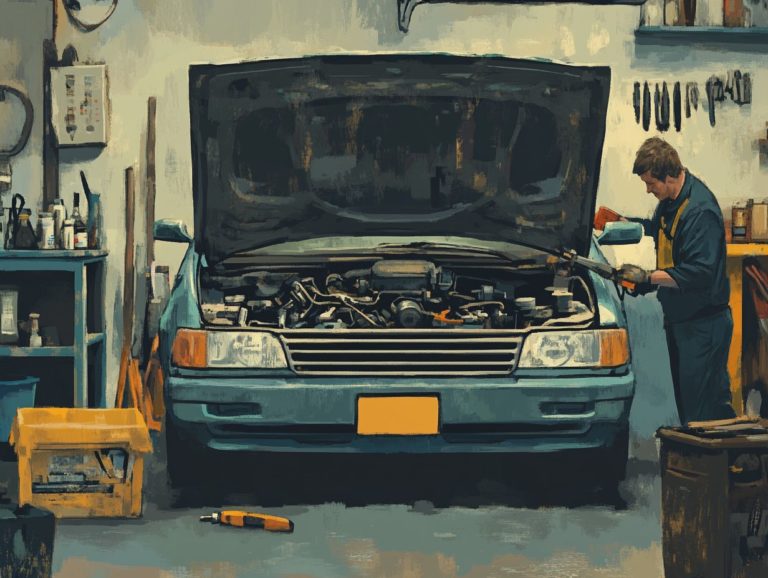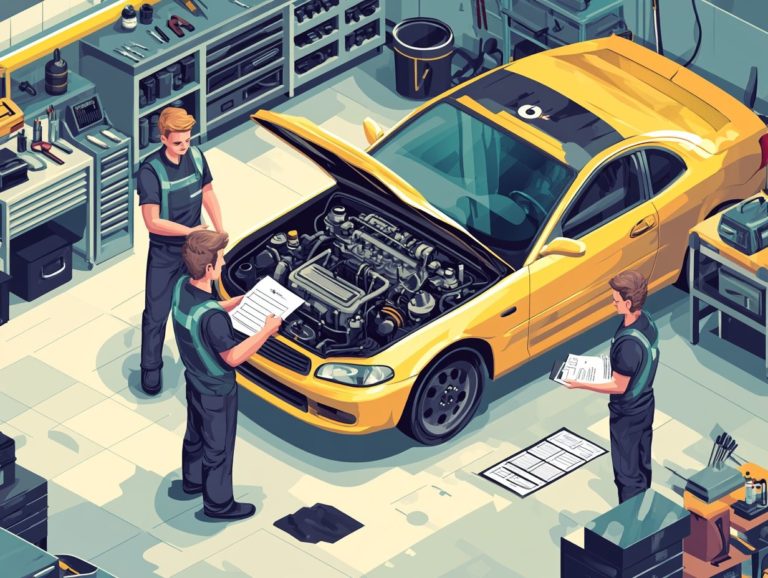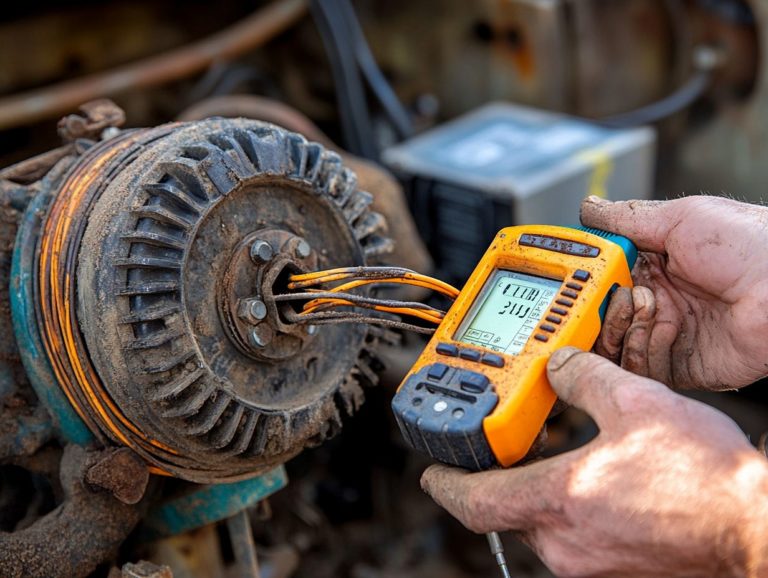What to Look for in a Good Maintenance Plan?
A well-structured maintenance plan is crucial for ensuring the longevity and efficiency of any asset, whether it s machinery, buildings, or equipment.
This article delves into what a maintenance plan consists of and examines the numerous benefits it provides, such as cost savings and enhanced efficiency.
Let s dive into the key components that make a maintenance plan effective, along with guidance on selecting the right one for your specific needs and best practices for successful implementation!
Contents
- Key Takeaways:
- Understanding Maintenance Plans
- Benefits of Having a Maintenance Plan
- Key Components of a Good Maintenance Plan
- Implementing and Managing a Maintenance Plan
- Frequently Asked Questions
- What should be included in a good maintenance plan?
- What are some key factors to consider when evaluating a maintenance plan?
- What are the benefits of having a comprehensive maintenance plan?
- How often should a maintenance plan be reviewed and updated?
- What role do employees play in a successful maintenance plan?
- Is it worth investing in preventive maintenance as part of a maintenance plan?
Key Takeaways:

- A good maintenance plan should include regular inspections and maintenance tasks to prevent costly repairs and ensure efficiency.
- Emergency response plans should also be part of a maintenance plan to effectively handle unexpected issues.
- Consider factors such as budgeting and resource allocation when choosing the right maintenance plan for your specific needs.
Understanding Maintenance Plans
Understanding maintenance plans is vital for achieving great performance and extending equipment lifespan across your facilities. A carefully planned guide goes beyond just detailing the necessary procedures and schedules for maintenance tasks; it also includes an inventory of your assets, allowing you to prioritize them effectively.
By embracing strategic maintenance management practices, you can elevate your facility’s overall performance and decrease the chances of equipment failure. This thorough approach to maintenance planning incorporates preventive, reactive, and methods that depend on the equipment’s condition, ensuring you can adapt seamlessly to evolving needs.
What is a Maintenance Plan?
A maintenance plan is your carefully planned guide, detailing the procedures, schedules, and resources essential for executing maintenance tasks with precision.
This comprehensive guide acts as your roadmap for maintenance management, ensuring that every activity aligns seamlessly with your organizational goals and operational requirements. By defining specific responsibilities and timelines, it elevates communication among team members and fosters a culture of accountability.
At the heart of this framework are work orders, which formally request maintenance activities, outlining the necessary actions and resources. Proper maintenance documentation is vital for tracking performance and supporting well-considered choices, ultimately enhancing the longevity and efficiency of your equipment and facilities.
Benefits of Having a Maintenance Plan
Crafting a comprehensive maintenance plan brings a wealth of benefits that greatly enhance the operational efficiency and longevity of equipment in your organization.
Cost Savings and Efficiency
One of the most significant benefits of having a maintenance plan is the substantial cost savings you can achieve through improved maintenance efficiency.
By prioritizing regular inspections and scheduled servicing, you can better manage spare parts consumption, ensuring they are utilized only when necessary rather than in a reactive manner. This proactive approach minimizes the likelihood of unexpected breakdowns and drastically reduces the frequency of costly emergency repairs that can disrupt your operations.
With a well-structured maintenance strategy in place, you can significantly extend the lifespan of your equipment, allowing you to maximize your investment in machinery and technology. Your overall operational costs will decrease, paving the way for increased profitability while fostering a safe and reliable work environment.
Key Components of a Good Maintenance Plan

A robust maintenance plan is crafted from essential components that seamlessly collaborate to guarantee effective maintenance management and optimal equipment performance. By prioritizing these elements, you can achieve a level of operational excellence that enhances efficiency and reliability.
Regular Inspections and Maintenance Tasks
Regular inspections and maintenance tasks are the cornerstones of an effective maintenance plan. They ensure that your equipment operates at peak performance.
By systematically revisiting these essential activities, you can proactively spot issues before they escalate into serious problems. This approach ultimately extends the lifespan of your assets.
Prioritizing maintenance tasks with thoughtfully crafted schedules allows your teams to concentrate on important parts of your operation that directly influence productivity and safety.
Leveraging comprehensive maintenance checklists streamlines the process. This ensures that no crucial details slip through the cracks during inspections.
These structured approaches foster a culture of accountability and vigilance. They promote long-term reliability and efficiency throughout your operation. Actively focusing on preventive measures can save you from costly repairs!
Emergency Response Plan
An effective emergency response plan is essential within your maintenance strategy. It equips your team to tackle unexpected equipment failures with agility.
This level of preparedness ensures that immediate issues are resolved efficiently while prioritizing the overall safety of your facility during crises. Be ready for anything!
Such a plan should detail essential procedures, including clear protocols for assessing situations, communicating effectively with all stakeholders, and coordinating closely with contractors who may offer specialized support.
By defining clear roles and responsibilities, your maintenance team can minimize downtime and sustain operational continuity.
Regular drills and training sessions are crucial to reinforce these procedures. They cultivate a culture of readiness and resilience that can significantly mitigate the impact of unforeseen events.
Budgeting and Resource Allocation
Proper budgeting and resource allocation are crucial elements of a successful maintenance plan. They ensure you have the necessary resources readily available for all maintenance tasks.
When you formulate maintenance budgets effectively, your organization gains the ability to anticipate needs more accurately. This lets you allocate funds strategically and enhance overall performance.
This kind of foresight enables your maintenance teams to tackle routine upkeep while also managing unforeseen issues with remarkable agility.
By aligning financial resources with specific maintenance objectives, you can ensure optimal equipment functionality, minimize downtime, and extend the life of your assets.
This thoughtful alignment fosters a proactive approach, ensuring that preventative measures receive the funding they deserve. The result? Significant cost savings and improved operational efficiency that pay dividends in the long run.
Choosing the Right Maintenance Plan for Your Needs
Selecting the ideal maintenance plan tailored to your organization s unique needs is essential for optimizing the management of both equipment and resources.
Factors to Consider

When you re selecting a maintenance plan, there are several important factors to consider. This ensures it effectively meets your organization s maintenance needs.
One of the most critical aspects is the condition of your equipment. Remember, aging or poorly maintained machinery can lead to costly downtime something no one wants to deal with.
Evaluating the skills of your maintenance team is also essential. A well-trained workforce will be far better equipped to handle unexpected repairs and implement preventive measures.
Using maintenance performance metrics can offer valuable insights into the efficiency and effectiveness of your chosen plan. This enables you to make continuous improvements and adjustments as needed.
All these elements come together to create a comprehensive strategy that fosters operational excellence.
Implementing and Managing a Maintenance Plan
Implementing and managing a maintenance plan demands your keen attention to detail and a well-organized approach to maintenance management.
It s not just about ticking boxes; it s about creating a strategy that ensures every aspect is meticulously addressed for optimal results.
For those looking to optimize their maintenance approach, it s time to review your current maintenance plans and consult with us for assistance!
Best Practices and Tips
Adopting best practices and strategies can significantly elevate the effectiveness of your maintenance plan. It enhances overall efficiency.
Use smart scheduling software. It helps you create proactive maintenance schedules rather than reactive ones. This ensures essential tasks are completed on time, minimizing downtime and extending your equipment’s lifespan.
Foster an open environment where team members share insights and collaborate. This boosts morale and enriches the collective expertise available for problem-solving.
Track key maintenance metrics, like Mean Time Between Failures (MTBF) (the average time before equipment fails) and maintenance costs. This data allows you to assess performance accurately and highlights areas needing attention.
Continuous evaluation and adaptation reinforce a culture of excellence within your maintenance team.
Frequently Asked Questions
What should be included in a good maintenance plan?
A good maintenance plan should include regular inspections, routine maintenance tasks, emergency protocols, and a schedule for equipment replacement or upgrades.
What are some key factors to consider when evaluating a maintenance plan?

Key factors include the type and complexity of equipment, the frequency of maintenance tasks, the availability of spare parts, and the overall cost and effectiveness of the plan.
What are the benefits of having a comprehensive maintenance plan?
A solid maintenance plan prevents costly breakdowns and keeps your equipment running smoothly. It also extends the lifespan of your equipment, improves efficiency and productivity, and ensures compliance with safety regulations.
How often should a maintenance plan be reviewed and updated?
Review and update maintenance plans at least once a year, or more frequently if there are significant changes in equipment, processes, or regulations.
What role do employees play in a successful maintenance plan?
Employees play a crucial role by following safety protocols, reporting any equipment issues, and participating in routine maintenance tasks as needed.
Is it worth investing in preventive maintenance as part of a maintenance plan?
Yes, investing in preventive maintenance saves time and money in the long run. It catches potential issues before they become major problems and reduces the likelihood of unexpected breakdowns.
Ready to improve your maintenance plan? Start today!






